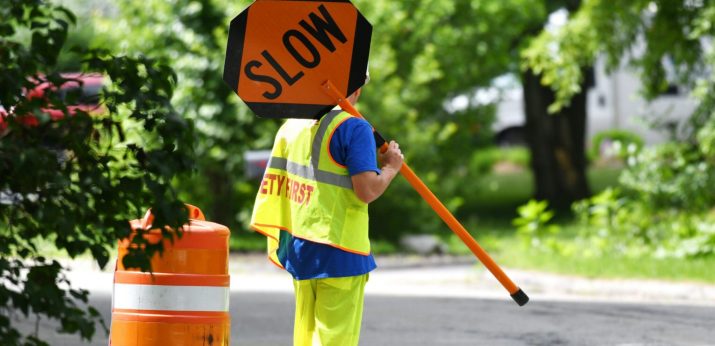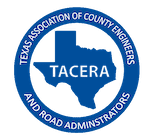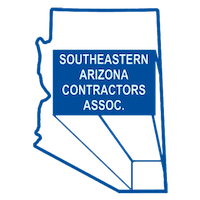Work zone safety is a massive concern for pedestrians and anyone working close to roads. Back in 2019, the U.S. Department of Transportation reported over 120,000 work zone crashes that ended in 750 people losing their lives. Following work zone safety measures best practices is the most helpful way to ensure people will stay safe around work sites.
In this article, we’ll take a closer look at understanding work zone safety measures, best safety practices for work zones, and designing effective work zone safety measures.
Understanding Work Zone Safety Measures
Work zones refer to areas where utility work, maintenance, or construction on roads is being performed. Because these areas create a higher risk to workers, motorists, and pedestrians, adequate safety measures need to be set in place to reduce accidents, fatalities, and promote a safer working environment.
There are a variety of potential hazards that both motorists and workers face when they’re in closer proximity to work zones. Hazards include:
- Heavy or sharp materials
- Moving vehicles
- Being struck with large machinery
- Getting stuck between equipment
- Falling objects
On work sites, navigation through areas with changing traffic patterns, reduced visibility, and uneven surfaces also poses a concern that leaves workers susceptible to accidents. Motorists can become impatient in work zones, which can lead to stress and frustration that can result in more accidents, as well.
To reduce the risks and create a safer work environment for everyone involved, a wide range of safety measures need to be set in place.
Best Practices for Work Zone Safety Measures
Creating a safe environment for workers and motorists involves some careful planning of many of the following best practices.
Assessment: A complete assessment of the work zone should be conducted to identify any potential hazards or risks that may occur. All stakeholders should be involved in this planning process to develop a traffic management plan to include appropriate signage, traffic control devices, and communication strategies.
Signage: After the assessment phase, visible signage should be installed to inform motorists of upcoming work zones. When signage is placed a reasonable distance before the work zone, motorists have enough time to adjust their speeds and lane positions. If any hazardous areas exist, pavement markings and reflective materials should be used.
Traffic control measures: To ensure traffic is controlled and regulated, barricades and cones should be used to carefully guide motorists through the work zone safely and effectively.
Worker safety: Another best practice for work zone safety measures is to make sure all workers are fully trained on work zone safety. That means they should be familiar with potential hazards that may occur and always use proper personal protective equipment.
Speed control: Speed control measures should be in place well before motorists even reach work zones. There should also be speed bumps and speed monitoring devices to deter speeding as motorists approach these zones.
Inspections: Routine inspections should be conducted to ensure work zones remain safe and effective. Additionally, it helps to have a maintenance plan in place to address any issues with barriers, signage, or markings.
Designing Effective Work Zone Safety Measures
It requires careful planning, design, and forethought to make work zones safer for workers and motorists. There are several work zone safety measures to keep in mind when developing a strategy.
Temporary Traffic Signs
Temporary traffic signs inform people before they’re about to enter a work zone. Temporary traffic signs need to be visibly clear, consistent, and display the relevant information in an understandable way. These signs also need to be in compliance with regulations for their size, placement, color, and messages.
Temporary traffic signs are important in several ways:
- They help to eliminate confusion for motorists
- People will recognize that they’re approaching a work zone and know to reduce speeds
- They help to regulate the follow of traffic
- Workers will feel safer and less prone to accidents
Barricades and Channelizing Devices
With barricades and channelizing devices, traffic can be separated, diverted, or restricted entirely from work areas. These devices must be chosen depending on the type, volume, and traffic speed.
Some factors to think about when installing barricades and channelizing devices include the following:
- They should be easy to see for everyone on the road at all times
- They should be durable and able to withstand vehicular impact and fluctuating weather conditions
- They should be compatible with other traffic control devices in the work zone
- Set up, maintenance, and removal should be easy
Barrier Placement and Design
Barriers are an excellent way to prevent accidents from happening to motorists. With the use of barriers, vehicles can’t enter a specific work zone. Barriers should be designed and placed according to the work zone environment they’re used in. Some of the factors used to determine this are the alignment, slope, clearance, and drainage of a particular roadway.
There are a few goals that barrier placement and design aim to achieve:
- They should divide work areas from the flow of traffic
- Vehicles shouldn’t be able to intrude through their placement
- They should comply with regulations for barrier design and installation
- Their use shouldn’t interfere with workers and people using the road
Safety Fences and Pedestrian Protection
Safety fences are another effective work zone safety measure that prevents pedestrians, vehicles, cyclists, and animals from gaining entry to a work area. In the best-case scenario, safety fences are installed around the entire perimeter of a work zone or hazard. Safety fences should be marked so they’re easy to see by everyone around them.
There are a couple of highlighted benefits of installing safety fences around work zones:
- They keep workers protected from distractions
- They reduce the chances of trespassing, vandalism, or theft of materials and work equipment
- Injuries are less likely to occur
Pedestrian safety is a huge concern when it comes to work areas. Ideally, pedestrians should have designated walkways that are divided from the flow of traffic. Additionally, pedestrians should know of any changes or detours, and appropriate signage can help with this.
Keep Your Work Area Safe With Transline Industries
Implementing effective work zone safety measures is essential for protecting the lives of workers and motorists and ensuring a safe working environment. Following the best practices we discussed will significantly reduce the risks associated with work zones.
At Transline Industries, we understand the importance of work zone safety and offer a wide range of traffic control products, pavement marking materials, and safety supplies. Our extensive experience and expertise allow us to provide top-level service and meet your specific safety requirements. From custom sign building to traffic paint and equipment, we have the products you need to enhance work zone safety.
Contact us today to learn more about our products and how we can assist you in creating a safer work zone. Together, we can prioritize safety and contribute to a safer working environment for all.













